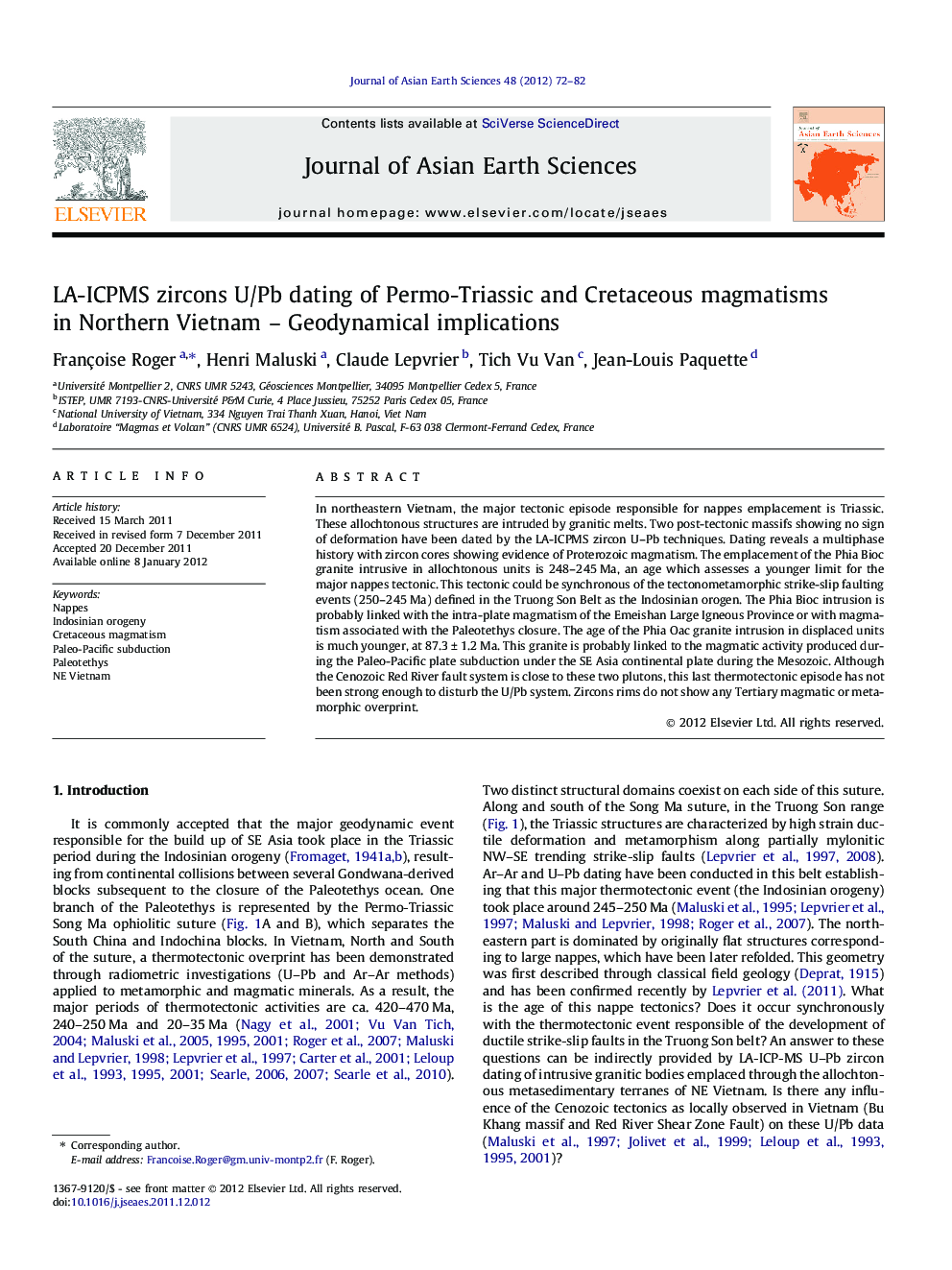| Article ID | Journal | Published Year | Pages | File Type |
|---|---|---|---|---|
| 4731583 | Journal of Asian Earth Sciences | 2012 | 11 Pages |
In northeastern Vietnam, the major tectonic episode responsible for nappes emplacement is Triassic. These allochtonous structures are intruded by granitic melts. Two post-tectonic massifs showing no sign of deformation have been dated by the LA-ICPMS zircon U–Pb techniques. Dating reveals a multiphase history with zircon cores showing evidence of Proterozoic magmatism. The emplacement of the Phia Bioc granite intrusive in allochtonous units is 248–245 Ma, an age which assesses a younger limit for the major nappes tectonic. This tectonic could be synchronous of the tectonometamorphic strike-slip faulting events (250–245 Ma) defined in the Truong Son Belt as the Indosinian orogen. The Phia Bioc intrusion is probably linked with the intra-plate magmatism of the Emeishan Large Igneous Province or with magmatism associated with the Paleotethys closure. The age of the Phia Oac granite intrusion in displaced units is much younger, at 87.3 ± 1.2 Ma. This granite is probably linked to the magmatic activity produced during the Paleo-Pacific plate subduction under the SE Asia continental plate during the Mesozoic. Although the Cenozoic Red River fault system is close to these two plutons, this last thermotectonic episode has not been strong enough to disturb the U/Pb system. Zircons rims do not show any Tertiary magmatic or metamorphic overprint.
► In the NE Vietnam, U–Pb ages of the undeformed, post nappes granite are 248–245 Ma. ► This nappe tectonics is older or synchronous of the Indosinian strike-slip tectonics observed in the Truong Son Belt. ► The age of the Phia Oac granite intrusion is 87.3 ± 1.2 Ma old. ► This Cretaceous magmatism is probably linked to the Paleo-Pacific subduction.
